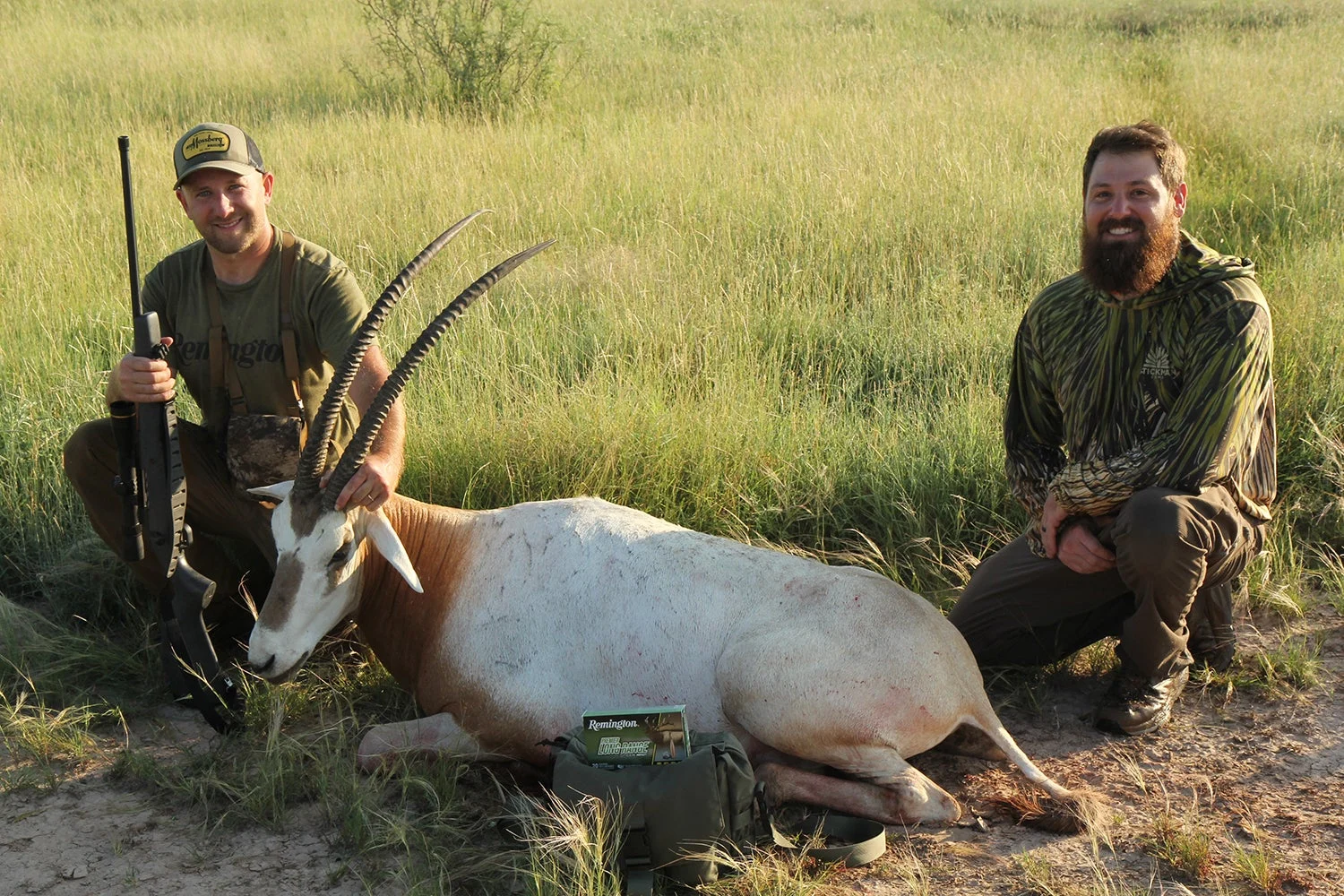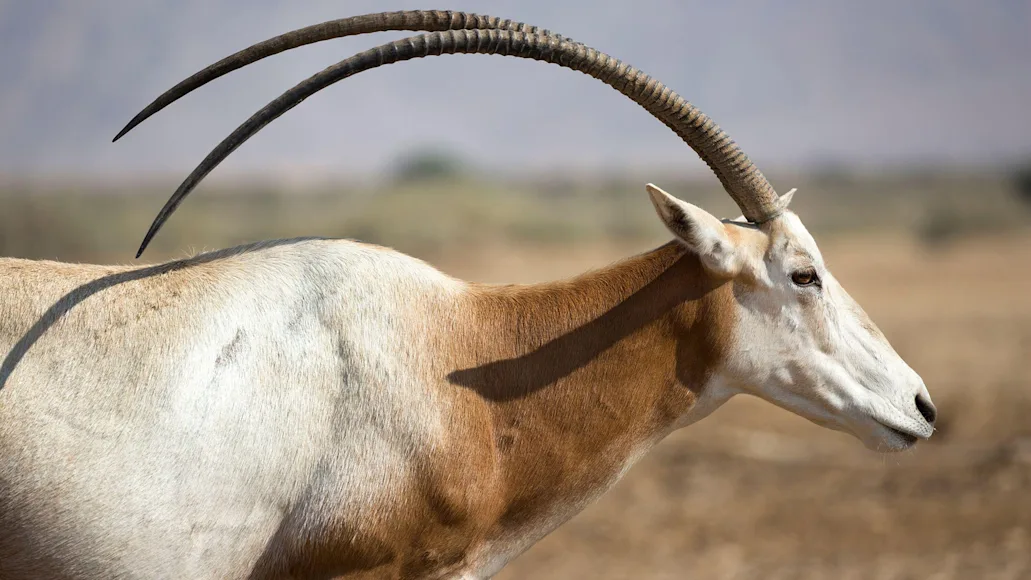I’M ON A HIGH RACK built onto a 1985 Dodge pickup, glassing the desert country with a good view of the Davis Mountains, where I’ve hunted for aoudads and where the elk hunting is rumored to be good too. Neither of those critters is native to the area, but neither is the milk-white scimitar oryx I’m now hunting on the flats among the thorns and Spanish daggers.
In other words, I’m in Texas—West Texas, just south of Alpine, where in the 1970s local hunters and landowners learned that scimitar oryxes, which were declared extinct in their home range of North Africa in 2000, would thrive in the arid border country of the Trans-Pecos, like so many other exotic species. And that people would pay good money to hunt them.
Some folks don’t like the unapologetic blend of capitalism and hunting that happens across the Lone Star state. They wring their hands over feeders and high racks and fences and the scarcity of public land. They question the ethics, or at least the aesthetics, of hunting an introduced species that’s all but extinct (since 2000, a few scimitar oryx have been reintroduced in Africa), in the places where it’s supposed to live naturally. But hunting Texas has a way of surprising you, even after you’ve done a bunch of it. The Texans I’ve come to know across the massive state would advise you with a smile to spend your money elsewhere if you’re overcome with scruples, but to lighten up and have fun while you’re here. The oryxes that exist in Texas exist because of the hunting dollars associated with them, and they’re much wilder than the oryxes that don’t exist anymore in Africa.
Tough Stuff
I was surprised, in fact, at just how wild the oryxes in West Texas are. Generally, open-country game animals like pronghorns and mule deer that haven’t been pressured much will tolerate the sight of a pickup from a few hundred yards away. The property we’re hunting is 75,000 low-fenced acres, and the oryxes here haven’t been hunted in a year. You can see for miles in this country, especially from the high rack, and just about every oryx we spot within a thousand yards is already hauling ass away from us. I learn quickly that getting onto these animals calls for glassing distant groups, usually a half-dozen or so animals, with binoculars or a spotting scope, and then planning a long stalk, using cover and terrain to stay hidden. It’s a lot like hunting pronghorns, but arguably more difficult.

Courtesy of Will Brantley
We mess up a couple stalks on the first afternoon, but just before dark, John Radzwilla, editor of Hook & Barrel magazine, kills a female oryx that has threaded the skull of a beef cow onto her horns. Up close, she’s a much larger animal than I expected to see, and I learn that the area’s oryxes have a penchant for messing with bleached skulls found in the desert. The molars from the cow skull have dug a gash into the animal’s head, but according to Radzwilla, she seemed to pick through the brush alongside the rest of the herd without issue. I also learn that scimitar oryxes can go for months without water, an adaptation that allows them to thrive here. It’s tough country for tough animals.
We locate the same herd the following morning, and after watching them for a while through a spotter, I can tell that there’s one big bull tending the remaining cows. It’s difficult to distinguish him through the brush, since both sexes have horns and similar coloration, but given a clear view, the bull is undeniably larger, slightly darker, and his horns more massive. We stalk to within 130 yards of him once, but I can see only his head and rear end through the brush, and he boogers out. We return to the truck and find him again from the high rack, almost a mile away, and my guide, Wes, and I take off on another stalk, with John following close behind with his camera. When Wes sees that the bull is about to cross a clearing some 400 yards ahead, our slow stalk turns into a crouching sprint to cut the animal off.
Rare Opportunity
Our interception is perfect. I step out from behind a creosote bush and put the rifle on sticks just as the bull crosses ahead of us in the wide open, 278 yards away. The rifle I’m shooting is a Mossberg Patriot LR Hunter
in .300 Win Mag. At the beginning of the hunt, I’d have said that the rifle is a touch heavy for a long stalk, but breathing hard like I am—partly from the jog and partly from nerves—the extra weight is nice to have to help keep the rifle stable. I hold on the bull’s shoulder and squeeze the trigger. There is a hollow whump at the shot, and the bull buckles, but stays on his feet. I shoot twice more as he scrambles into the brush, both misses, but the shots aren’t needed anyhow. The first bullet centered his heart, and the bull collapses as I prepare to shoot the last shot in the rifle.
I top off the magazine with the cartridges in my pocket, and we march ahead for a look at him. The oryx’s striking coloring and long, curved horns, like scimitars, make for a cool trophy, and while I’m taking that in, I can’t help but be struck by our good fortune at being able to chase an antelope whose wild specimens would be all but gone from the earth if it weren’t for West Texas.
There’s one more perk to hunting oryxes, which I start noting as we skin the bull. The meat has deep marbling, large grain, and a mild hue. After I get him home, my son and I spend a Sunday afternoon slicing and packaging large oryx steaks that need little trimming. I pan-fry a few of them, and the mild flavor is as close to beef as that of any game animal I’ve tried. Like I said, Texas always has a way of surprising me.
_Read more F&S+
stories._






